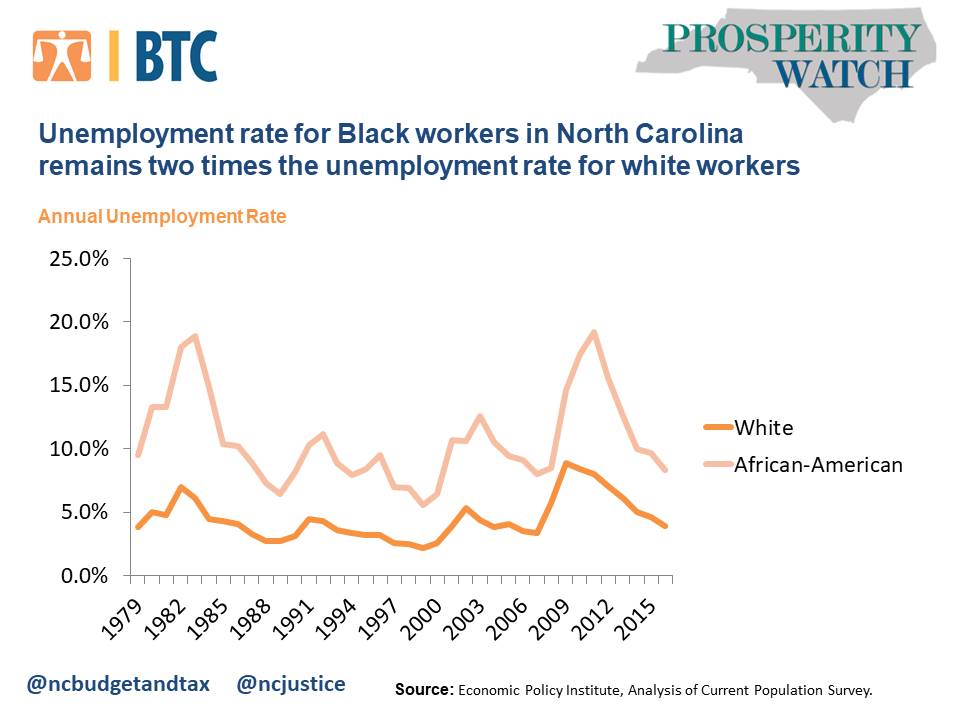Prosperity Watch (Issue 82, No. 2)
Jan. 15, 2018
New national data released earlier this month found that the unemployment rate for Black workers dropped to its lowest level on record (6.7 percent). At the state level, the unemployment rate for Black workers is still 2.3 times higher than that for white workers, and the unemployment rate for Latinx workers is 1.5 times higher than that for White workers, according to the latest available data from the third quarter of 2017 on unemployment rates by race and ethnicity in North Carolina.
The unemployment rate, a measure of those out of work and looking for work, was 7 percent for Black people in the third quarter of 2017. The last time the state’s overall unemployment rate was at 7 percent was in 2013. The persistence of such an elevated unemployment rate for Black people five years past the overall unemployment rate has declined from such levels signals the barriers that have remained in place for Black people in particular. The failure of job growth to reach evenly across geographies, the persistence of barriers to employment like the lack of affordable retraining for new careers, and the concentrations of Black workers in the public sector are particular factors explaining unemployment differences in the recent period.
In this context, even with declines in unemployment rates, differences that have existed over a longer period persist. While the unemployment rate for Blacks is down by 1.3 percentage points from where it was when the Great Recession began, that is only slightly better than the decline in unemployment for white workers over the same period (1 percentage point). It is also insufficient to reach employment equity across racial and ethnic groups.
Looking at unemployment rates back to 1979 finds the unemployment rate has remained higher for Black workers than white workers in both good economic times and bad. The pace of the recent decline in the unemployment rate is not enough to undo the decades of persistently higher experience of unemployment by Black workers that is driven by structural factors—geographic distance to jobs, discrimination in hiring, and the lack of affordable job training in growing industries—unaddressed in recent policymaking. The moment in this time period when unemployment rates were declining for both groups and the gap closed to one of its smallest points was in the late 1990s, when jobs were widely available even if they didn’t always pay a living wage.
 Justice Circle
Justice Circle 
